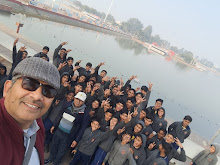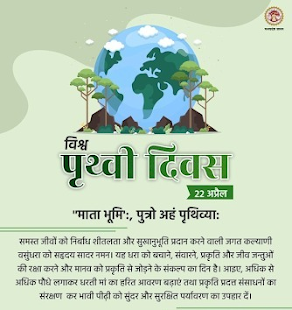KVS FOLLOWS FOUR HOUSE SYSTEM
FOR THE PURPOSE OF
INTER HOUSE COMPETITIONS
IN THE SCHOLASTIC AND CO-SHOLASTIC AREAS OF EDUCATION.
EACH STUDENT SHOLUD BE AWARE OF HIS / HER HOUSE AND MUST KNOW ABOUT
GREAT PERSONALITIES: SHIVAJI, TAGORE, ASHOK AND RAMAN
विध्यार्थी हर साल अपने हाउस के बारे में लाइब्ररी की पुस्तीका मे लिखेंगे !
S........T......... A .......R...........:Shivaji :Tagore : अशोक: रमन
.............................................................................................
Shivaji:
Shivaji's portrait (1680s) from the collection of British Museum | |
| Reign | 1674–1680 |
|---|---|
| Coronation | 6 June 1674 (first) 24 September 1674 (second) |
| Predecessor | Position created |
| Successor | Sambhaji |
| Born | 19 February 1630 Shivneri, Ahmadnagar Sultanate (present-day Maharashtra, India) |
| Died | 3 April 1680 (aged 50) Raigad Fort, Maratha Empire (present-day Maharashtra, India) |
| Spouse |
|
| Issue | 8[4] (including Sambhaji and Rajaram I) |
| House | Bhonsle |
| Father | Shahaji |
| Mother | Jijabai |
| Religion | Hinduism |
Shivaji Bhonsale I (Marathi pronunciation: [ʃiʋaˑd͡ʒiˑ bʱoˑs(ə)leˑ]; c.19 February 1630 – 3 April 1680), also referred to as Chhatrapati Shivaji, was an Indian ruler and a member of the Bhonsle Maratha clan. Shivaji carved out an enclave from the declining Adilshahi sultanate of Bijapur that formed the genesis of the Maratha Empire. In 1674, he was formally crowned the Chhatrapati of his realm at Raigad Fort.
Over the course of his life, Shivaji engaged in both alliances and hostilities with the Mughal Empire, the Sultanate of Golkonda, Sultanate of Bijapur and the European colonial powers. Shivaji's military forces expanded the Maratha sphere of influence, capturing and building forts, and forming a Maratha navy. Shivaji established a competent and progressive civil rule with well-structured administrative organisations. He revived ancient Hindu political traditions, court conventions and promoted the usage of the Marathi and Sanskrit languages, replacing Persian in court and administration।
Shivaji's legacy was to vary by observer and time, but nearly two centuries after his death, he began to take on increased importance with the emergence of the Indian independence movement, as many Indian nationalists elevated him as a proto-nationalist and hero of the Hindus.
Rabindranath Tagore:
| रबीन्द्रनाथ टैगोर (१९२५) | |
| स्थानीय नाम | রবীন্দ্রনাথ ঠাকুর |
|---|---|
| जन्म | 07 मई 1861 कलकत्ता (अब कोलकाता), ब्रिटिश भारत[1]l |
| मृत्यु | 07 अगस्त 1941 कलकत्ता, ब्रिटिश भारत[1] |
| व्यवसाय | लेखक, कवि, नाटककार, संगीतकार, चित्रकार |
| भाषा | बांग्ला, अंग्रेजी |
| साहित्यिक आन्दोलन | आधुनिकतावाद |
| उल्लेखनीय सम्मान | साहित्य के लिए नोबल पुरस्कार |
| जीवनसाथी | मृणालिनी देवी (१ मार्च १८७४–२३ नवंबर १९०२) |
| सन्तान | ५ (जिनमें से दो का बाल्यावस्था में निधन हो गया) |
| सम्बन्धी | टैगोर परिवार |
| हस्ताक्षर | |
Rabindranath Tagore FRAS (Bengali: রবীন্দ্রনাথ ঠাকুর, /rəˈbɪndrənɑːt tæˈɡɔːr/ (![]() listen); 7 May 1861 – 7 August 1941) was a Bengali polymath who worked as a poet, writer, playwright, composer, philosopher, social reformer and painter. He reshaped Bengali literature and music as well as Indian art with Contextual Modernism in the late 19th and early 20th centuries. Author of the "profoundly sensitive, fresh and beautiful" poetry of Gitanjali, he became in 1913 the first non-European and the first lyricist to win the Nobel Prize in Literature Tagore's poetic songs were viewed as spiritual and mercurial; however, his "elegant prose and magical poetry" remain largely unknown outside Bengal He was a fellow of the Royal Asiatic Society. Referred to as "the Bard of Bengal" Tagore was known by sobriquets: Gurudev, Kobiguru, Biswakobi.
listen); 7 May 1861 – 7 August 1941) was a Bengali polymath who worked as a poet, writer, playwright, composer, philosopher, social reformer and painter. He reshaped Bengali literature and music as well as Indian art with Contextual Modernism in the late 19th and early 20th centuries. Author of the "profoundly sensitive, fresh and beautiful" poetry of Gitanjali, he became in 1913 the first non-European and the first lyricist to win the Nobel Prize in Literature Tagore's poetic songs were viewed as spiritual and mercurial; however, his "elegant prose and magical poetry" remain largely unknown outside Bengal He was a fellow of the Royal Asiatic Society. Referred to as "the Bard of Bengal" Tagore was known by sobriquets: Gurudev, Kobiguru, Biswakobi.
A Bengali Brahmin from Calcutta with ancestral gentry roots in Burdwan district[9] and Jessore, Tagore wrote poetry as an eight-year-old.[10] At the age of sixteen, he released his first substantial poems under the pseudonym Bhānusiṃha ("Sun Lion"), which were seized upon by literary authorities as long-lost classics.[11] By 1877 he graduated to his first short stories and dramas, published under his real name. As a humanist, universalist, internationalist, and ardent anti-nationalist,[12] he denounced the British Raj and advocated independence from Britain. As an exponent of the Bengal Renaissance, he advanced a vast canon that comprised paintings, sketches and doodles, hundreds of texts, and some two thousand songs; his legacy also endures in his founding of Visva-Bharati University.[13][14]
Tagore modernised Bengali art by spurning rigid classical forms and resisting linguistic strictures. His novels, stories, songs, dance-dramas, and essays spoke to topics political and personal. Gitanjali (Song Offerings), Gora (Fair-Faced) and Ghare-Baire (The Home and the World) are his best-known works, and his verse, short stories, and novels were acclaimed—or panned—for their lyricism, colloquialism, naturalism, and unnatural contemplation. His compositions were chosen by two nations as national anthems: India's "Jana Gana Mana" and Bangladesh's "Amar Shonar Bangla". The Sri Lankan national anthem was inspired by his work.[15]
| शासनावधि | 269 ईसा पूर्व से 232 ईसा पूर्व |
|---|---|
| राज्याभिषेक | 270 ईसा पूर्व |
| पूर्ववर्ती | बिंदुसार |
| उत्तरवर्ती | दशरथ मौर्य |
| जन्म | 304 ईसा पूर्व पाटलिपुत्र, पटना |
| निधन | 232 ईसा पूर्व पाटलिपुत्र, पटना |
| समाधि | पाटलिपुत्र |
| जीवनसंगी | देवी कारुवाकी पद्मावती तिष्यरक्षिता |
| संतान | महेन्द्र संघमित्रा तीवल कुणाल चारुमती |
| घराना | मौर्य |
| पिता | बिन्दुसार |
| माता | सुभद्रांगी (रानी धर्मा) |
चक्रवर्ती सम्राट अशोक[1] (संस्कृत: अशोकः ) (ईसा पूर्व 304 से ईसा पूर्व 232) विश्वप्रसिद्ध एवं शक्तिशाली भारतीय मौर्य राजवंश के महान सम्राट थे। सम्राट अशोक का पूरा नाम देवानांप्रिय अशोक मौर्य (राजा प्रियदर्शी देवताओं का प्रिय) था। उनका राजकाल ईसा पूर्व 269 से, 232 प्राचीन भारत में था। मौर्य राजवंश के चक्रवर्ती सम्राट अशोक ने अखण्ड भारत पर राज्य किया है तथा उनका मौर्य साम्राज्य उत्तर में हिन्दुकुश, तक्षशिला की श्रेणियों से लेकर दक्षिण में गोदावरी नदी, सुवर्णगिरी पहाड़ी के दक्षिण तथा मैसूर तक तथा पूर्व में बांग्लादेश, पाटलीपुत्र से पश्चिम में अफ़गानिस्तान, ईरान, बलूचिस्तान तक पहुँच गया था। सम्राट अशोक का साम्राज्य आज का सम्पूर्ण भारत, पाकिस्तान, अफ़ग़ानिस्तान, नेपाल, बांग्लादेश, भूटान, म्यान्मार के अधिकांश भूभाग पर था, यह विशाल साम्राज्य उस समय तक से आज तक का सबसे बड़ा भारतीय साम्राज्य रहा है। चक्रवर्ती सम्राट अशोक विश्व के सभी महान एवं शक्तिशाली सम्राटों एवं राजाओं की पंक्तियों में हमेशा शीर्ष स्थान पर ही रहे हैं। सम्राट अशोक ही भारत के सबसे शक्तिशाली एवं महान सम्राट है। सम्राट अशोक को ‘चक्रवर्ती सम्राट अशोक' कहा जाता है, जिसका अर्थ है - ‘सम्राटों के सम्राट’, और यह स्थान भारत में केवल सम्राट अशोक को मिला है। सम्राट अशोक को अपने विस्तृत साम्राज्य से बेहतर कुशल प्रशासन तथा बौद्ध धर्म के प्रचार के लिए भी जाना जाता है। [2][3] सम्राट अशोक ने संपूर्ण एशिया में तथा अन्य आज के सभी महाद्विपों में भी बौद्ध पन्थ का प्रचार किया। सम्राट अशोक के सन्दर्भ के स्तम्भ एवं शिलालेख आज भी भारत के कई स्थानों पर दिखाई देते है। इसलिए सम्राट अशोक की ऐतिहासिक जानकारी एन्य किसी भी सम्राट या राजा से बहूत व्यापक रूप में मिल जाती है। सम्राट अशोक प्रेम, सहिष्णूता, सत्य, अहिंसा एवं शाकाहारी जीवनप्रणाली के सच्चे समर्थक थे, इसलिए उनका नाम इतिहास में महान परोपकारी सम्राट के रूप में ही दर्ज हो चुका है।
कलिंग युद्ध के दो वर्ष पहले ही सम्राट अशोक [[भगवान बुद्ध]ने था जिससे













